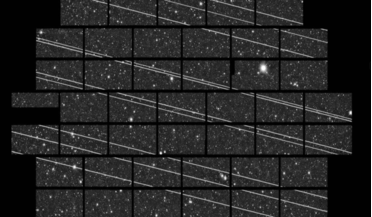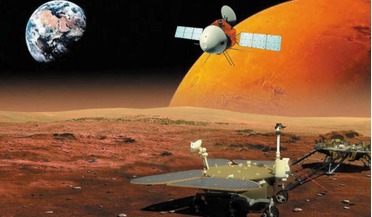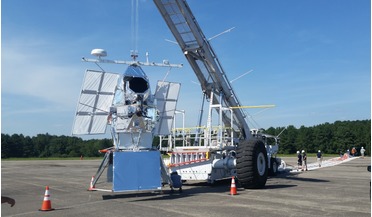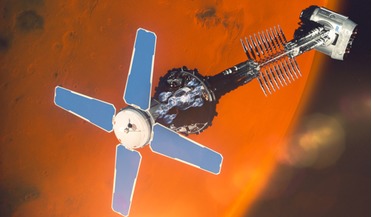 26 August 2020
LEO constellations will "fundamentally change" astronomy, warns new report
26 August 2020
LEO constellations will "fundamentally change" astronomy, warns new report
... searches for near-Earth objects (NEOs), distant Solar System objects, rare transients, exoplanet transits in ...painted a small number of satellites black twisted the position of their solar panels to make them less visible. But, says the report, if ...
 10 February 2021
Success for China as Tianwen-1 enters Mars' orbit
10 February 2021
Success for China as Tianwen-1 enters Mars' orbit
... Weighing about 240 kilograms, the rover has six wheels and four solar panels and is able to move 200 metres per hour on Mars. ... the Valles Marineris, one of the largest canyons of the Solar System, stretching a vast 4000 kilometres (2500 miles) long....
 14 May 2021
China is about to land its Zhurong rover on Mars
14 May 2021
China is about to land its Zhurong rover on Mars
... NASA’s Curiosity rover but slightly larger than the now-defunct Spirit and Opportunity rovers. It is powered by solar panels and is designed to study Mars’ climate, magnetic field, geological structure, and surface composition. Providing the landing...
 21 July 2021
New balloon-borne astronomical telescope to rival Hubble
21 July 2021
New balloon-borne astronomical telescope to rival Hubble
... it will image the sky all night, then use solar panels to recharge its batteries during the day. SuperBIT has already...Although SuperBIT is well suited for experiments relating to solar planet spectroscopy and exoplanet studies, when launched next ...
 13 January 2021
The UK Space Agency and Rolls-Royce launch study into nuclear-powered space exploration
13 January 2021
The UK Space Agency and Rolls-Royce launch study into nuclear-powered space exploration
... power in space becomes increasingly precious with distance from the Sun. In the outer Solar System, sunlight gets too dim for solar panels, and other technologies like fuel cells are often too patchy as a source of energy...
 December 2014
Skolkovo and a new breed of Russian space startups
December 2014
Skolkovo and a new breed of Russian space startups
... satellite, TabletSat-Aurora. Weighing in at only 26 kg, the satellite nonetheless boasts a good power supply capacity due to a solar panel system (a strict launch deadline set by Kosmotras forced the developers to forego the original plan to build...